News
New Year's Ebook Flash Sale December 29 2020

As we welcome 2021, we are pleased to offer discounted prices on select ebooks on scripture, doctrine, and community. This sale runs from January 1–4 and is available for both Kindle and Apple ebooks.
Sale ends Monday, Jan 4.
Doctrine| Scripture | ||
|
$17.99 |
$27.99 |
$22.99 |
|
$18.99 |
$22.99 |
$23.99 |
| Doctrine | ||
|
$30.99 |
$17.99 |
$9.99 |
|
$26.99 |
$16.99 |
$18.99 |
| Community | ||
|
$18.99 |
$14.99 |
$18.99 |
|
$23.99 |
$18.99 |
$9.99 |
Q&A with Richard G. Moore, editor of The Writings of Oliver H. Olney April 1842 to February 1843 — Nauvoo, Illinois May 11 2020

The handwritten papers of Oliver Olney are housed in the Beinecke Rare Book and Manuscript Library at Yale University and are made available in published form for the first time. They offer historical researchers and interested readers of the early Latter-day Saint movement a unique glimpse from the margins of religious society in Nauvoo. Olney’s writings add light to key events in early Mormonism such as rumors of polygamy, the influence of Free Masonry in Nauvoo, plans to migrate westward to the Rocky Mountains, as well as growing tensions with disaffected church members and rising conflict with Nauvoo’s non-Mormon neighbors.
Q: How did you discover Oliver Olney and what made you decide to transcribe his writings?
A: Some years ago, I was looking for a topic for a paper to present at the John Whitmer Historical Association Conference. The theme that year had to do with the divergent paths of belief that some early converts to the Restoration took. I remembered reading a Times and Seasons editorial called “Try the Spirits” that mentioned a number of people who had left the church founded by Joseph Smith after receiving their own revelations. Returning to that article, I found the name of Oliver Olney. I didn’t know if there was enough information about him to write a paper but was surprised to discover that there were over four hundred-fifty pages handwritten by Olney housed at Yale. I obtained a copy of his writings, transcribed much of what he had written, and was able to present a paper at the conference. After my presentation, Greg Kofford approached me and said that he would like to publish all of Olney’s writings. I began the work of transcribing everything that I could find written by Oliver Olney.
Q: Can you describe Oliver Olney? Who was he and why is he a significant source for the Nauvoo era?
A: Oliver Olney joined the Latter-day Saint movement in 1831 while living in Ohio. He and his wife moved to Kirtland where he became president of the Teachers Quorum. His wife was the daughter of John Johnson and the sister of Luke and Lyman Johnson, two of the Restoration’s first apostles. He and his wife later moved to Missouri and experienced the anti-Mormon violence there. They eventually moved to Nauvoo. Oliver was on a mission to the Eastern States when his wife, who had remained in Nauvoo, passed away. Returning from his mission, he became disaffected with the Church and its leaders. However, after being excommunicated, he remained in Nauvoo and wrote down what he observed taking place there. His writings are first-hand accounts, albeit biased, of a person living in Nauvoo during the early 1840s.
Q: Can you give us a brief overview of how this documentary history is organized?
A: Olney wrote something of a dated journal for several years. However, he often wrote more than one version for a particular date. His papers were in numbered folders at Yale University’s Beinecke Rare Book & Manuscript Library. Unsure which version Olney wrote in what order, the book is arranged by date, in order of the folder in which they appear. In other words, if he wrote three entries for June 3, they would be arranged like this: June 3 [folder 2], June 3 [folder 5], June 3 [folder 7]. Also included in the book are two complete booklets that Olney had published.
Q: What are a few big takeaways that we get from Oliver’s writings?
A: Olney had heard rumors spreading around Nauvoo about polygamy among Church leaders and he wrote about what he had heard. He also noted the establishment of a Masonic chapter in Nauvoo. He said that he was unsure about the virtue of Masonry and claimed that the Mormon version of Masonry being practiced in Nauvoo was an immoral thing—even connecting the Danites to what he referred to as “new-fangled” Masonry. Olney also viewed the formation of the Relief Society as Masonry for women. In 1842 he stated that the Mormons were already making plans to move to the Rocky Mountains and establish a kingdom there.
Q: Can you share a few issues Olney had with church leadership? Why do you think he remained in Nauvoo after his excommunication?
A: Some of the biggest issues that Olney had with church leadership were financial. At the time he was writing, he viewed himself and others in Nauvoo as being poverty stricken while church leaders lived in luxury. He viewed tithing and the law of consecration as gouging the Saints for the benefit of church leaders. He was also troubled by rumors of plural marriage being practiced by church leaders. He felt that the Restoration had gone off the track. Olney did stay in Nauvoo for several years after his excommunication, even though he said in a few of his writings that he believed his life to be in jeopardy. I believe he stayed at first because he thought a reformation could take place within the Church and he saw himself as the person who could help that reform take place. After coming to believe that there was no hope for church leaders to repent, I believe he stayed to get more dirt or ammunition for his attack on Mormonism.
Q: Can you give us a little insight into Olney's claimed visions and heavenly visitations?
A: Olney recorded visits of heavenly messengers, giving him instructions for building God’s kingdom on the earth in preparation for the Second Coming of Christ. Prominent in these visits were the Ancient of Days, twelve prophets from Old Testament times that would meet with him quite often. Olney claimed that these twelve, who lived on the North Star, called him to choose a new Quorum of the Twelve. He was ordained to a special priesthood by them and was told where to find a buried Nephite treasure to fund the building of the kingdom. He also said that he was visited several times by the deceased apostle, David W. Patten.
Q: Do we know what became of Oliver Olney after Nauvoo?
A: Prior to leaving Nauvoo, Olney remarried a Mormon woman, a believer who was assistant secretary in the first Relief Society. Very little is known about him after he left Nauvoo. He returned to Nauvoo after the death of Joseph Smith and, according to his own writing, hoped to be able to receive his endowment in the Nauvoo Temple. I was unable to find anything about him after that except the assumption that he died in Illinois sometime in 1847 or 1848.
Richard G. Moore
May 2020
Q&A with Talana S. Hooper for Lot Smith: Mormon Pioneer and American Frontiersman November 01 2018

| Download a free preview | Order your copy |
Q: Give us some background into this book. How did it come together?
A: My grandfather James M. "Jim" Smith was the youngest of Lot Smith's fifty-two children. Since Lot Smith was killed by a renegade Navajo six months before my grandfather's birth, my Grandpa James sought his entire life to learn all he could about the father he never knew. He soon discovered that his father had lived a life which generated myths and legends. He obtained many firsthand accounts which were most often tinged with admiration and love—yet not all were complimentary. Jim Smith's oldest son, my father Omer, recorded the stories and enlisted the help of my mother Carmen to more completely research Lot Smith's history in libraries around the country. When Omer unexpectedly passed, Carmen continued to research, interview, and compile for another thirty years. However, by her mid-nineties, her eyesight had failed enough so that even with her magnifying glass she could no longer see her computer screen well enough to continue. I knew that Lot Smith's life story was too compelling and valuable to be lost. With her blessing and help (while she was still able), I began working to bring the biography together for publication.
Q: For readers who are unfamiliar with Lot Smith, can you give us a basic background of who he was?
A: Lot Smith, a man with a fiery red beard and a temper to match it, experienced firsthand many of the significant events in the early history of The Church of Jesus Christ of Latter-day Saints. His life was one adventure after another. He joined the Mormon Battalion at the age of sixteen and participated in the California Gold Rush. The life lessons he learned during the Mormon Battalion prepared him for a life of service—many times grueling—for the Church and his fellowmen.
Smith continued his military career. His reputation of fearlessness became widely known as a member of the Minute Men Life Guards—the cavalry that defended the Latter-day Saints in the Rockies from Indians. He was a captain of the Life Guards who rescued the Willie and Martin Handcart Companies. Major Smith served a critical role in defending his fellow Saints from what seemed certain annihilation by the US Army by burning their supplies and wagons in the Utah War. For that act, he was hailed as a hero by the Saints, but indicted for treason in the US courts. After Smith fought in the Walker War, he was appointed as a captain in the US Army to guard telegraph lines and mail routes during the American Civil War. During that service, he and his men endured a harrowing, life-threatening chase after unknown Indians who had stolen two hundred horses. Readers will enjoy several interesting trips with Brigham Young when Smith served as an escort guard. Smith lastly served as Brigadier General in the Black Hawk War and then served a mission in the British Isles.
In 1876 Brigham Young called Smith to lead colonization in the Arizona Territory. Young charged Smith to establish the United Order and to befriend the Indian tribes. Both these directives brought more adventures as they struggled to secure a mere livelihood. Smith served as Arizona's first stake president, and his Sunset United Order provided a way station for others colonizing in New Mexico, Arizona, and Mexico. Smith also helped lead Church colonization in Mexico—another ordeal.
Smith was one of the most feared gunmen in Arizona. He several times drew his gun on men meaning harm but pulled the trigger only once. Besides defending his rights as a stockman, he vowed he would never be arrested for polygamy and narrowly escaped arrest many times. His untimely death came from a shot in the back by a renegade Navajo.
Q: Can you give us a scene from Lot Smith's life that you found particularly interesting?
A: It is difficult to choose just one scene from Lot Smith's life to share. I considered the incident when one of his men was accidentally shot during the Utah War or the rescue of the Martin Handcart Company. I remember the death-defying chase up the Snake River in the Civil War. And then I consider the time when he had a shootout with a man hired to kill him. All are incredible events! And yet, I choose simple episodes Smith shared with his sons.
While Smith lived in Arizona, the federal marshals increased their efforts to arrest any polygamists. Smith had four wives in Arizona, so he was a target. He was always on the alert and evaded arrest many times by riding a fast horse and carrying a fast gun. One time when Lot and his sons were shucking corn in the field, a marshal appeared some distance away. Smith told his boys to shock him up in the corn. When the officer rode up, the boys greeted him cordially. The officer never did figure out how Smith escaped the area!
On another occasion, Smith was traveling with his son Al in a wagon. Lot looked up the road to see a man on horseback and said to Al that it looked like a U.S. Marshal. Since Lot was convinced that no deceit could enter the Kingdom of God, he wanted all his posterity to be honest and truthful at all times—even in the face of danger. So when he saw the marshal, he told his son to stay in the wagon and not to lie, or he'd skin him alive. Lot took his gun and hid behind a bush. The officer approached and asked Al if he were Lot Smith's son. Al replied that he was. Then the officer asked where his father was. Al replied, "Right behind that bush beside you." The officer didn't look; he feared Smith's gun. He merely said, "Well, you tell him that I passed the time of day with him," and said good-bye.
Q: There are a lot of myths and legends that surround Lot Smith. Can you talk about a couple and set the record straight?
A: Several preposterous stories have been attributed to Lot Smith—probably because of his reputation as a rough character with a strong personality, and an expert gunman which caused people to fear him. One widespread myth was that he was involved in the Mountain Meadows Massacre. How could Smith, the hero of the Utah War, be in Wyoming and southern Utah at the same time? Yet the myth persisted, and newspapers printed at his death that he was involved in the massacre.
One of the most oft-repeated myths of Lot Smith was that he branded his wives. It was so widely believed that at the death of his wife Jane in 1912, people still speculated if she had been branded.
The myth followed Smith to Arizona. Children of his last wife, Diantha, were told that their mother had been branded. The real story of Smith "branding his wife" involved his second wife Jane after his first wife Lydia had left. While Lot and two of his friends were branding near his home in Farmington, Jane was preparing dinner for her husband and the guests. Jane needed eggs. She went out and spied some eggs in the manger where she couldn't reach without entering the corral. Jane knew that Lot's stallion chased and bit anyone but Lot, but the stallion seemed to be dozing in the far corner of the corral. She reasoned that she could sneak in unnoticed. However, the stallion was not as drowsy as she has assumed. He jerked up his head, shrieked, and charged Jane. Without dropping his branding iron, Lot jumped and ran between his wife and the stallion. When she ducked to go under the fence, he pushed her through with the branding iron. The men at the branding fire watched as Jane twisted to check her nice skirt that she wore for company. The branding iron had cooled enough that it didn't even scorch it. One of the men laughed and said, "That's one that won't get away from you; she's branded!"
Lot, who loved to entertain and enjoyed a sense of humor, was partially responsible for starting the myth. In church meetings after this incident, he arose to bear his sincere testimony. Along with recounting his blessings, he was heard to say on more than one occasion, "And anything I own, I brand—including my wife!"
Q: What do you hope readers will take away from reading this book?
A: Most of all, I want readers of the Lot Smith biography to enjoy the incredible and fascinating life of Lot Smith. His life was one thrilling adventure after another! Since his life entwined significant events in the early history of The Church of Jesus Christ of Latter-day Saints, I hope that readers get an up-close perspective of some of these events.
I hope readers learn through Lot's experiences that trials and hard circumstances can refine us. When Lot was in the Mormon Battalion, he experienced periods of no food, no water, no shoes, and scanty clothing. His compassion for others in similar situations was born. He was always generous to the poor and could never turn away anyone who was hungry even when food was scarce. It seems he often carried an extra pair of shoes to give away freely.
Lot's strong leadership in the colonization of the destitute Arizona Territory in the United Order was phenomenal. Through hard work and wise leadership, the colonists avoided starvation and established homes. I want readers to more fully realize and understand some of the sacrifices our forefathers made to settle the frontier land for future generations.
| Download a free preview | Order your copy |
Author Spotlight: Jessie L. Embry June 14 2018

Conversation with Jessie L. Embry
Jessie L. Embry is a former associate director of the Charles Redd Center for Western Studies and an instructor of history at Brigham Young University. She is the author of several books and over eighty articles dealing with Mormon, western, and Utah history. She is currently the editor of the Journal of Mormon History.
Q: Can you give us a little background into your academic training and your interest in Mormon studies?
A: When I graduated from high school, I thought I would become a secondary school history teacher. After a number of twist and turns, I ended up as Brigham Young University majoring in history with a goal to study Native Americans and teach college. Ted Warner told me that I was right gender but wrong color. Still, he mentored me through a senior seminar paper on Indian relocation. He also gave me a scholarship for a master’s program. Then Tom Alexander hired me as a research assistant to study Wilford Woodruff. As we read books about spiritual experiences and Woodruff’s diaries, I learned research skills. Also as a graduate student, I took an oral history class from Gary Shumway. When I could not think of a thesis topic, Leonard Arrington suggested Relief Society grain storage. It sounded boring, but I learned that it was the perfect case study to learn about the changing roles of women in the LDS Church. After a mission (that I went on because I could not find a job), James B. Allen hired me to work on the Genealogical Society history. Following an Utah State Historical Society preservation internship, Tom hired me to direct the oral history program at the Charles Redd Center for Western Studies. He supported my efforts to plan oral history projects and write books and articles. Lavina Fielding Anderson helped me become a better writer. And James B. Allen allowed me to teach history classes and other department chairs continued to assign me classes.
That is the long answer. The short answer is I stumbled into history and Mormon studies, but my great mentors peaked my curiosity and taught me the value of understanding the LDS past.
Q: You have written books and articles on a wide variety of topics from Mormon polygamy, race and Mormonism, Mormon studies historiography, regional histories, and more. If you were given unlimited research funding and open access to the archives, what topic would you pick and why?
A: Sometimes people ask me what my favorite project is, and my answer is the one I am working on. Kent Powell told me that I could take the most boring subject and make it interesting. As with my master’s thesis, I have been open to suggestions and then dove in. At times in my career unlimited research funding would have been great, but that is not a problem any more. And while open access would always be nice, I am not sure that there is always the information that I would want to find.
But to answer the question, I would like to research why changes have taken place in the LDS Church and what motivated those changes. Along the same lines, I would like to know if there is a cause and effect between what happened and what was going on in the United States and the world. Since that is pretty abstract, let me give some examples. I researched LDS recreation programs which included all-church sports tournaments and dance festivals. I learned a lot about how those programs developed and why they were discontinued. I learned how the programs affected the buildings. I have some answers of why the changes, but I wish I had more. When I worked for Gordon Irving and the James Moyle Oral History Project in the late 1970s, I interviewed women about their reactions to the Women’s Lib Movement of the time. I would like to know more about the reactions of Church leaders and members to that movement. And that is my current project.
Q: As the current editor of the Journal of Mormon History, you have come across articles by numerous up-and-coming scholars of Mormonism. What trends are you seeing emerge from younger scholars and where do you imagine the future of Mormon studies to be headed?
A: I am trained as a historian, but I also learned from other disciplines. That is what I taught BYU students, and it is very gratifying to see former students become great historians. Many of them and the younger scholars are more focused on Mormon studies/religious studies than just straight history. I think that Mormon studies will include more comparative studies and focus more on theories. I hope in that change that young scholars remember that history is stories. I hope they will gather the stories and then look for the theories that might work rather than trying to make the data fit the theories.
That being said, I am excited that there are so many young scholars interested in the Mormon past. I started my career during the New Mormon History period. Because of the negative reactions, I believe that we lost a whole generation of people studying Mormon history/Mormon studies. It is refreshing to know that we can overcome what Roger Launius called the graying of the Mormon History Association. It is good to see new faces, and I look forward to publishing these scholars in the Journal of Mormon History. I learn so much from them.
Thanks, Jessie!
 Mormon Polygamous Families: Life in the Principle
Mormon Polygamous Families: Life in the Principle
By Jessie L. Embry
318 pages
$24.95 paperback
A Very Brief History of D&C Section 132: The Plural Marriage Revelation February 14 2018

Section 132 of the Doctrine and Covenants was the last of Joseph Smith’s formal written revelations and it was a watershed in Mormonism for many reasons. Like many of Joseph Smith’s early revelations, the revelation was given to an individual, not a community. Its target was his own wife, Emma Hale Smith, largely in response to her rejection of plural marriage. Polygamy, the main theme of the July 1843 revelation, is a complex subject in Mormonism. This short work can only hope to discuss a few aspects that relate specifically to what is now Section 132 of the Doctrine and Covenants, and the impact that this revelation has had on Mormonism.
Mormon polygamy essentially began in Nauvoo. One of its functions was to serve as a threshold of loyalty to Joseph Smith. Taking the step of participating in polygamy was a high-cost social commitment for women and men. Polygamy not only tested loyalty to Smith, it might have even increased it—and not just while he lived. Joseph Smith took enormous risk in introducing polygamy to any individual. While he generally selected men and women who were already close to him and had demonstrated their commitment to Mormonism, it was dangerous to challenge some of the most fundamental boundaries of the religious and social landscape. Some dissented, such as first presidency counselor William Law and his wife Jane Law, both who later publicly opposed Smith. That opposition joined a sequence of events terminating in Smith’s assassination. After Smith’s death, church leaders who were among the insiders of plural marriage became his de facto successors.
In Utah, the Church faced increasing public opposition to the practice of “plurality.” Controversy flared as Utah transitioned from its hoped-for independent nation status into a territory of the United States. The territorial selection of officials brought federal appointees to the Mormon stronghold. Shocked by polygamy and Mormon control of the political process, those federal appointees left the territory with stories of obstructionism and wives in abundance among elite Mormon men. Those tales led LDS leadership to publish two relatively secret texts up to that point: the plural marriage revelation (now D&C 132), and an April 3, 1836 vision of Joseph Smith and Oliver Cowdery in the Kirtland, Ohio temple (now D&C 110). This public reveal of polygamy in 1852 solidified Washington’s opposition to Utah’s statehood. That building opposition (later called the “Raid” for the practice of U.S. Marshalls hunting polygamists) ultimately led the First Presidency to curtail the practice and preaching of plural marriage in Utah at the end of the 1880s. Public claims that the Church was still allowing new plural marriage in abundance placed heavy pressures on Church President Wilford Woodruff. After prayerful and careful consideration, Woodruff produced a document that denied current authorization of plural marriages in Utah. After meeting with fellow leaders over the document, it was edited to the succinct “Manifesto” (now Official Declaration 1), a press release statement that advised the abandonment of contracting plural marriage where it violated the law.
The statement was not intended to give the idea that D&C 132 was now void. And the psychological, sociological, metaphysical, and religious structures founded on it would take time to move and modify. Minutes and diaries of LDS apostles of the period show that many leaders thought the 1890 announcement must be temporary, that God would open the way to public polygamy once again. They, like Joseph Smith before them, saw their religious obligation as superior to their public political stance. Their commitment to the revelation and its claim as a part of the “restoration of all things” made it difficult to universally abandon the practice. Former Church President John Taylor and Woodruff himself had produced written revelations encouraging continued plural marriage. The result of these cross-pressures was that church-leader-sponsored polygamy continued through the next two decades, though in small and ever dwindling numbers. Complete termination seemed on the order of abandoning baptism or the temple endowment. The election of apostle Reed Smoot to the U.S. Senate firmed the LDS Church’s public opposition to post-manifesto polygamy, an opposition fueled strongly by Smoot himself. The plural marriage revelation formed a paradoxical cornerstone of Mormon belief in this environment as its sealing subtext became the core logic of the doctrine of eternal family over against its placing of polygamy as the higher law. Gradually, church leaders came to complete unity over ending all exceptions to public bans of the practice.
As Mormonism publicly forgot polygamy and embraced the role of quintessential clean-living white Americans, their position as an Intermountain West institution was accepted as the home of teetotaling, disciplined, and largely ordinary folk with quaint beliefs in an enchanted past. It was when LDS temples began to invade Christian fundamentalist home turf in places like Dallas and Atlanta that the plural marriage revelation again became a source of criticism among counter-cult ministries and a growing ex-Mormon publishing industry.
Section 132 never underwent the same textual expansion-contraction cycle that marked many of Smith’s other revelations during his lifetime. His life ended too soon for any revisions. It is nevertheless true that in many ways the July 12, 1843 plural marriage revelation has affected the course of Mormonism for nearly two centuries; and it was redacted, not with pen and ink, but with selective reading that shifted its focus from plural marriage onto eternal monogamous marriage. Yet, many important themes in current Mormonism are based on narratives derived from the plural marriage revelation. Section 132 is a deeply-embedded component of Church teachings on eternal family, the approach of the Church towards gay rights and marriage, and social issues such as the role of women within the Church and family life. It is not an exaggeration to say that the revelation on polygamy is one of the cornerstones that underlies what Mormonism is today.
William Victor Smith received a PhD in mathematics at the University of Utah, where he also studied history under Davis Bitton. After post-doctoral work at Texas Tech University, he worked at the University of Mississippi, the University of Pau, and Brigham Young University. He has been published in Dialogue: A Journal of Mormon Thought and is the admin for the Book of Abraham Project website. He currently lives with his wife Gailan in Orem, Utah. Together they have six children.
Mark your calendar
Please join us on Tuesday, March 13th at Writ & Vision in Provo for a special roundtable discussion of Textual Studies of the Doctrine and Covenants: The Plural Marriage Revelation. Panelists include Bill Smith, Lindsay Hansen Park, and Don Bradley. The event begins at 7:00 PM and is free to attend. Writ & Vision: 274 W Center Street, Provo, UT.
Textual Studies of the Doctrine & Covenants: The Plural Marriage Revelation
By William V. Smith
Part of the Contemporary Studies in Scripture series
Available February 27, 2018
Pre-order your copy
Q&A with William V. Smith for Textual Studies of the Doctrine and Covenants: The Plural Marriage Revelation February 07 2018

Available February 27, 2018
Pre-order Your Copy Today
Q: Give us a little background into how you became interested in researching plural marriage?
A: Section 132 is Joseph Smith’s final revelation text and in some ways, it had a greater influence over his subsequent legacy than any other text aside from the Book of Mormon. My main historical interest in Mormonism is its preaching texts. Joseph Smith’s revelation texts, together with his own sermon corpus, are connected in many ways to that broader Mormon and Protestant sermon culture. The revelation had deep influence in the relationships between Territorial and statehood Utah and the United States; and made for interesting common ground narratives with other segments of the social landscape in America, as well as indelibly marking the boundaries between Mormon faithfulness and Protestant America even into the twenty-first century. Those stories fascinated me.
Q: It's a common misconception that Joseph Smith first learned about polygamy through the plural marriage revelation, when, in fact, he had already been practicing it for a few years prior to receiving it. If not to introduce it, what was the purpose of the revelation when it was received?
A: The revelation arises from a request by Hyrum Smith, but that story has multiple axes. His brother Hyrum seems to have been convinced of the virtue of polygamy out of its promise of being eternally with his deceased first wife, Jerusha Barden, while not abandoning his second wife, Mary Fielding. This domestic concept of heaven was the logic of polygamy for Hyrum. Emma Smith, first wife of Joseph, was deeply opposed to her husband’s polygamy for a multitude of reasons. Jealousy was at issue, but perhaps more-so the state of the Mormon community and its political and social predicament. Hyrum apparently believed his own adaption to polygamy could convince Emma of its virtue and bring Joseph and Emma into harmony. The result was a text largely directed to Emma Smith and very much a contemporary construction, yet it served to drive future social, religious, legal, and political tensions—including various schisms within the Church and the Smith family, the rise of Brigham Young and the apostles, and the long territorial status of Utah.
Q: In your book you show how the revelation points to new theological ideas and priesthood structures that Joseph introduced during the Nauvoo period. What are some of these new ideas, and why are they important to understanding the revelation?
A: The revelation brings to a climax many threads from 1830s Mormonism. For example, a refined picture of heaven, church hierarchy, and the Abrahamic story. It also reflects significant discourse in Nauvoo regarding coping with loss, heavenly progression, etc. Some of the theological threads originated with an event in June 1831. It was during a conference of that month that Joseph Smith introduced the “high priesthood.” Together with this introduction came the concept of “sealing up to eternal life.” Could a person, even a whole congregation, be guaranteed a seat at the Throne of Grace in this life? The high priesthood had the power to do this. I take some time in the book to explore the relationship of the high priesthood and its divisional office of patriarch with the idea of sealing, and how this idea became fully realized with the Nauvoo incarnation of sealing and priesthood. The plural marriage revelation draws on some elements of Smith’s Nauvoo preaching in public and private, some of which shows an interesting contrast between Smith’s public sermons and later interpretations that were prominent in Utah.
Q: What are some of the lasting impacts of the plural marriage revelation that are affecting Mormonism today?
A: Many important themes in current Mormonism are based on narratives derived from the plural marriage revelation. One of these is serial polygamous marriages where a man may remarry after the death of a spouse and have hopes that both households will be intact in the heavens. Women are not eligible for such practices. Temple practices of sealing, marriage, and family are traced to section 132, though not explicitly. The “Proclamation on the Family” is largely founded in nineteenth-century values that find textual support in the plural marriage revelation. The long defense of polygamy through the beginning of the twentieth century shaped the Church’s political attitudes in Utah to a great extent. Utah’s reaction to that political struggle was to position Mormons as ultra-Americans, rather than members of a dissenting sect of outsiders. These are just a few areas where the plural marriage revelation has had a large impact on Mormons historically and in the present.
Q: What are you hoping that readers will gain from reading Textual Studies of the D&C: The Plural Marriage Revelation?
A: My hope is that readers will come away with an increased respect for the early Mormons (especially women) who lived during the time of the practice of polygamy and its ending; as well as the power the revelation had over Mormon teaching and thought. The revelation is rarely quoted or referenced in the LDS church of the last nearly one hundred years, which was influenced by the political tension between Washington and Utah. I hope readers will gain a greater understanding of the roles that culture, the migration westward, public perception, and social change had on the public views of Latter-day Saints. Section 132 is a deeply-embedded component of Church teachings on eternal family, the approach of the Church towards gay rights and marriage, and social and political issues like the ERA and the role of women within the Church. It is not an exaggeration to say that the revelation on polygamy is one of the cornerstones that underlies what Utah and the LDS church are today.
Pre-order Your Copy Today
Please join us on Tuesday, March 13 at Writ & Vision in Provo, UT, for a special roundtable discussion and book signing for Textual Studies of the Doctrine and Covenants: The Plural Marriage Revelation. The roundtable discussion will feature Bill Smith, Don Bradley, and Lindsay Hansen Park. The event begins at 7:00 PM and is free to the public.
Ebook Flash Sale on Mormon titles starts December 12th! December 11 2017

Greg Kofford Books is pleased to announce our second annual EBOOK FLASH SALE on select titles on Tuesday, December 12th and Wednesday, December 13th! Pick up a few titles that have been on your reading list for as low as $2.99!
Click image below to purchase. Offer is valid for Kindle ebooks only.
 |
Future Mormon: Essays in Mormon Theology |
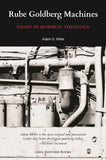 |
Rube Goldberg Machines: Essays in Mormon Theology |
 |
The Mormoness; or The Trials of Mary Maverick: A Narrative of Real Events |
 |
For Zion: A Mormon Theology of Hope |
 |
Who Are the Children of Lehi? DNA and the Book of Mormon |
 |
Fire on the Horizon: A Meditation on the Endowment and Love of Atonement |
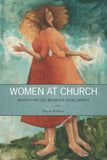 |
Women at Church: Magnifying LDS Women's Local Impact |
 |
Joseph Smith's Polygamy: Toward a Better Understanding |
 |
Knowing Brother Joseph Again: Perceptions and Perspectives |
 |
The End of the World, Plan B: A Guide for the Future |
 |
The Garden of Enid: Adventures of a Weird Mormon Girl, Part One |
 |
Perspectives on Mormon Theology: Apologetics |
Twelve Days of Kofford 2017 November 21 2017
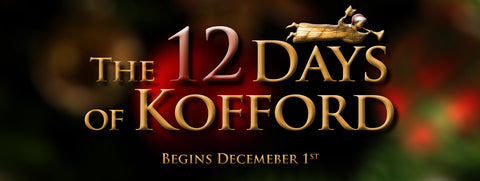
Greg Kofford Books is once again pleased to offer twelve days of discounted holiday shopping from our website!
HERE IS HOW IT WORKS: Every morning from Dec 1th through the 12th, we will be posting a DISCOUNT CODE on our Facebook or Twitter pages. Use this discount code on the corresponding day to receive 30% off select titles. The final day will be an e-book flash sale on Amazon.com.
To help you plan, here are the dates, titles, and sale prices we will be offering beginning Dec 1st. These sales are limited to available inventory. You must follow our Facebook or Twitter pages to get the discount code. Orders over $50 qualify for free shipping. Customers in the Wasatch Front area are welcome to pick orders up directly from our office in Sandy, UT.
Day 1 — Brant Gardner collection
 |
Second Witness, Vol 1: First Nephi $39.95 hardcover |
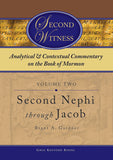 |
Second Witness, Vol 2: Second Nephi through Jacob $39.95 hardcover |
 |
Second Witness, Vol 3: Enos through Mosiah $39.95 hardcover |
 |
Second Witness, Vol 4: Alma $49.95 hardcover |
 |
Second Witness, Vol 5: Helaman through Nephi $39.95 hardcover |
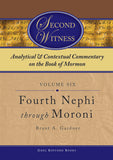 |
Second Witness, Vol 6: Fourth Nephi through Moroni $39.95 hardcover |
 |
The Gift and the Power: Translating the Book of Mormon $34.95 paperback |
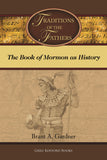 |
Traditions of the Fathers: The Book of Mormon as History $34.95 paperback |
 |
The Garden of Enid: Adventures of a Weird Mormon Girl $22.95 paperback |
 |
The Garden of Enid: Adventures of a Weird Mormon Girl $22.95 paperback |
Day 3 — The Mormon Image in Literature
 |
The Mormoness; Or, The Trials of Mary Maverick: $12.95 paperback |
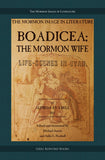 |
Boadicea; the Mormon Wife: Life Scens in Utah $15.95 paperback |
 |
Dime Novel Mormons $22.95 paperback |
 |
Women at Church: Magnifying LDS Women's Local Impact $21.95 paperback |
 |
Mormon Women Have Their Say: Essays from the Claremont Oral History Collection $31.95 paperback |
 |
Voices for Equality: Ordain Women and Resurgent Mormon Feminism $32.95 paperback |
 |
Joseph Smith's Polygamy, Vol 1: History $34.95 paperback |
 |
Joseph Smith's Polygamy, Vol 2: History $34.95 paperback |
 |
Joseph Smith's Polygamy, Vol 3: Theology $25.95 paperback |
 |
Joseph Smith's Polygamy: Toward a Better Understanding $19.95 paperback |
 |
Modern Polygamy and Mormon Fundamentalism: The Generations after the Manifesto $31.95 paperback |
 |
Mormon Polygamous Families: Life in the Principle $24.95 paperback |
 |
Prisoner for Polygamy: The Memoirs and Letters of Rudger Clawson at the Utah Territorial Penitentiary, 1884–87 $29.95 paperback |
 |
Who Are the Children of Lehi? DNA and the Book of Mormon $15.95 paperback |
 |
“Let the Earth Bring Forth”: Evolution and Scripture $15.95 paperback |
 |
Mormonism and Evolution: The Authoritative LDS Statements $15.95 paperback |
 |
Parallels and Convergences: Mormon Thought and Engineering Vision $24.95 paperback |
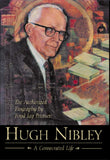 |
Hugh Nibley: A Consecrated Life $32.95 hardcover |
 |
“Swell Suffering”: A Biography of Maurine Whipple $31.95 paperback |
 |
William B. Smith: In the Shadow of a Prophet $39.95 paperback |
 |
LDS Biographical Encyclopedia, 4 Vols $259.95 paperback |
 |
The Man Behind the Discourse: A Biography of King Follett $29.95 paperback |
 |
Liberal Soul: Applying the Gospel of Jesus Christ in Politics $22.95 paperback |
 |
A Different God? Mitt Romney, the Religious Right, and the Mormon Question $24.95 paperback |
 |
Common Ground—Different Opinions: Latter-day Saints and Contemporary Issues $31.95 paperback |
 |
Even Unto Bloodshed: An LDS Perspective on War $29.95 paperback |
 |
War & Peace in Our Time: Mormon Perspectives $29.95 paperback |
 |
The End of the World, Plan B: A Guide for the Future $13.95 paperback |
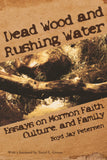 |
Dead Wood and Rushing Water: Essays on Mormon Faith, Culture, and Family $22.95 paperback |
 |
Mr. Mustard Plaster and Other Mormon Essays $20.95 paperback |
 |
Writing Ourselves: Essays on Creativity, Craft, and Mormonism $18.95 paperback |
 |
On the Road with Joseph Smith: An Author's Diary $14.95 paperback |
 |
Hearken O Ye People: The Historical Setting of Joseph Smith's Ohio Revelations $34.95 hardcover |
 |
Fire and Sword: A History of the Latter-day Saints in Northern Missouri, 1836–39 $36.95 hardcover |
 |
A House for the Most High: The Story of the Original Nauvoo Temple $29.95 paperback |
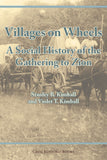 |
Villages on Wheels: A Social History of the Gathering to Zion $24.95 paperback |
 |
Mormonism in Transition: A History of the Latter-day Saints, 1890–1930, 3rd ed. $31.95 paperback |
Day 11 — International Mormonism
 |
Tiki and Temple: The Mormon Mission in New Zealans, 1854–1958 $29.95 paperback |
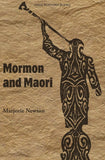 |
Mormon and Maori $24.95 paperback |
 |
The Trek East: Mormonism Meets Japan, 1901–1968 $39.95 paperback |
 |
From Above and Below: The Mormon Embrace of Revolution, 1840–1940 $34.95 paperback |
 |
The History of the Mormons in Argentina $24.95 paperback |
 |
For the Cause of Righteousness: A Global History of Blacks and Mormonism, 1830–2013 $32.95 paperback |
On the twelfth day of Kofford: $1.99 flash sale on Kindle e-books! December 12 2016

On the twelfth day of Kofford, fill your digital stockings with our HUGE e-book promotion. Today only, each of the following titles are only $1.99 on Kindle! PLUS, to help you prepare for the upcoming D&C year in Gospel Doctrine class, we are offering B. H. Robert's classic six-volume A Comprehensive History of the Church on Kindle for only $3.99!
This flash sale ends at midnight tonight (Dec. 12th)
On the seventh day of Kofford: 30% off polygamy titles! December 07 2016
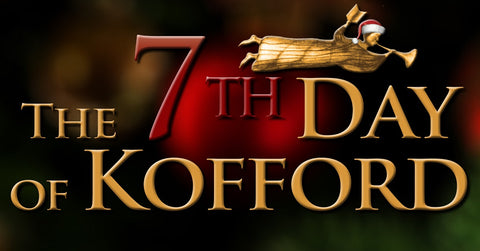
All polygamy titles are 30% off December 7th. These special prices are only available for one day, so don't wait!
Orders over $50 qualify for free shipping. Also, local Utah customers can opt to pick up their order directly from our office in Sandy (select this option under the shipping menu).
For more information about the Twelve Days of Kofford holiday sales, click here.
 |
Joseph Smith's Polygamy, Volume 1: History Now in paperback! Retail: $34.95 |
 |
Joseph Smith's Polygamy, Volume 2: History Now in paperback! Retail: $34.95 |
 |
Joseph Smith's Polygamy, Volume 3: Theology Now in paperback! Retail: $25.95 |
 |
Joseph Smith's Polygamy: Toward a Better Understanding Retail: $19.95 |
 |
Modern Polygamy and Mormon Fundamentalism: The Generations after the Manifesto Retail: $31.95 Best Book Award, John Whitmer Historical Association |
 |
Mormon Polygamous Families: Life in the Principle Retail: $24.95 |
 |
Prisoner for Polygamy: The Memoirs and Letters of Rudger Clawson at the Utah Territorial Penitentiary, 1884–87 Retail: $24.95 |
Twelve Days of Kofford Christmas Sale 2016 November 30 2016

MERRY CHRISTMAS FROM GREG KOFFORD BOOKS
Greg Kofford Books is pleased to announce our annual holiday sale on select popular titles beginning December 1st – December 12th.
Here's how it works: at the stroke of midnight each day, a new blog post will go live on our website listing that day's special offerings along with a discount code that you can enter at check-out to get the holiday price. It's that simple. We will also be posting the daily offering and discount code on our Facebook page at 7am.
*Orders over $50 qualify for free shipping (continental U.S. customers only). Local Utah customers can stop by our office in Sandy to pick up their orders as well. Holiday inventory on some titles may be limited, so be sure to take advantage of the daily sale early.*
To help you plan in advance, here are our scheduled sales:
Day 1 — Brant Gardner titles
 |
Second Witness: Analytical & Contextual Commentary on the Book of Mormon series
|
 |
The Gift and Power: Translating the Book of Mormon |
 |
Traditions of the Fathers: The Book of Mormon as History Best Religious Non-fiction Award, Association for Mormon Letters |
Day 2 — Adam Miller titles (essays in Mormon theology)
 |
Rube Goldberg Machines: Essays in Mormon Theology Retail $18.95 |
 |
Future Mormon: Essays in Mormon Theology Retail: $18.95 |
Day 3 — Personal Essays
 |
Dead Wood and Rushing Water: Essays on Mormon Faith, Culture, and Family Retail: $22.95 |
 |
Mr. Mustard Plaster and Other Mormon Essays by Mary Lithgoe Bradford Retail: $20.95 Sale price: $14.67 |
 |
Writing Ourselves: Essays on Creativity, Craft, and Mormonism Retail: $18.95 |
Day 4 — Blake T. Ostler titles
 |
Exploring Mormon Thought series by Blake T. Ostler 30% off each title |
 |
Fire on the Horizon: A Meditation on the Endowment and Love of Atonement Retail: $17.95 |
Day 5 — Contemporary Studies in Scripture
 |
Authoring the Old Testament: Genesis — Deuteronomy Retail: $26.95 |
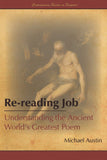 |
Re-reading Job: Understanding the Ancient World's Greatest Poem Retail: $20.95 |
 |
Search, Ponder, and Pray: A Guide to the Gospels Retail: $27.95 |
 |
Beholding the Tree of Life: A Rabbinic Approach to the Book of Mormon Retail: $21.95 |
 |
The Vision of All: Twenty-five Lectures on Isaiah in Nephi's Record Retail: $25.95 |
Day 6 — International Mormonism
 |
The Trek East: Mormonism Meets Japan, 1901–1968 Retail: $39.95 |
 |
Mormon and Maori Retail: $24.95 Best International Book Award, Mormon History Association |
 |
Tiki and Temple: The Mormon Mission in New Zealand, 1854–1958 Retail: $29.95 Best International Book Award, Mormon History Association |
 |
For the Cause of Righteousness: A Global History of Blacks and Mormonism, 1830–2013 Retail: $32.95 Best Book Award, Mormon History Association |
 |
The History of the Mormons in Argentina Retail: $24.95 |
 |
From Above and Below: The Mormon Embrace of Revolution, 1840 – 1940 Retail: $34.95 Best International Book Award, Mormon History Association |
Day 7 — Polygamy titles
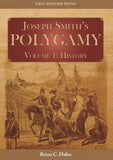 |
Joseph Smith's Polygamy: History and Theology Now in paperback! 30% off each title |
 |
Joseph Smith's Polygamy: Toward a Better Understanding Retail: $19.95 |
 |
Modern Polygamy and Mormon Fundamentalism: The Generations after the Manifesto Retail: $31.95 Best Book Award, John Whitmer Historical Association |
 |
Mormon Polygamous Families: Life in the Principle Retail: $24.95 |
 |
Prisoner for Polygamy: The Memoirs and Letters of Rudger Clawson at the Utah Territorial Penitentiary, 1884–87 Retail: $29.95 |
Day 8 — Contemporary Issues
 |
Women at Church: Magnifying LDS Women's Local Impact Retail: $21.95 |
 |
Common Ground—Different Opinions: Latter-day Saints and Contemporary Issues Retail: $31.95 |
 |
The Liberal Soul: Applying the Gospel of Jesus Christ in Politics Retail: $22.95 |
 |
Voices for Equality: Ordain Women and Resurgent Mormon Feminism Retail: $32.95 |
Day 9 — Biography
 |
Hugh Nibley: A Consecrated Life Retail: $32.95 Best Biography Award, Mormon History Association |
 |
“Swell Suffering”: A Biography of Maurine Whipple Retail: $31.95 Best Biography Award, Mormon History Association |
 |
William B. Smith: In the Shadow of a Prophet Retail: $39.95 Best Biography Award, John Whitmer Historical Association |
 |
The Man Behind the Discourse: A Biography of King Follett Retail: $29.95 |
Day 10 — War and Peace
 |
War & Peace in Our Time: Mormon Perspectives Retail: $29.95 |
 |
Even unto Bloodshed: An LDS Perspective on War Retail: $29.95 |
 |
The End of the World, Plan B: A Guide for the Future Retail: $13.95 |
 |
Saints of Valor: Mormon Medal of Honor Recipients, Updated 2nd Edition Retail: $31.95 |
Day 11 — Mormon Image in Literature
 |
The Mormoness; Or, The Trials Of Mary Maverick: A Narrative Of Real Events Retail: $12.95 |
 |
Boadicea; the Mormon Wife: Life Scenes in Utah Retail: $15.95 |
Day 12 — Ebook Flash Sale — $1.99 for select titles
To be announced. Stay tuned!
Year in Review and the Year Ahead December 29 2015
2015 was another amazing year for Greg Kofford Books! Here is a recap of the year and a look ahead to what is coming in 2016 and beyond.
Award-winning Publications
Several Kofford titles won awards from the Mormon History Association and the Association for Mormon Letters in 2015:
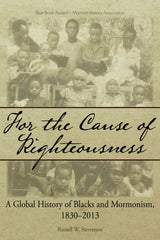 |
MHA Best Book Award For the Cause of Righteousness: A Global History of Blacks and Mormonism, 1830-2013 “Invaluable as a historical resource.” — Terryl L. Givens, author of Parley P. |
 |
MHA Best International Book Award Mormon and Maori “Unflinchingly honest yet unfailingly compassionate.” — Grant Underwood, |
 |
AML Religious Non-Fiction Award Re-reading Job: Understanding the Ancient World's Greatest Poem “A new gold standard for Mormon writings.” — Julie M. Smith, author, Search, |
All 2015 Titles
Here are all of the great titles that Greg Kofford Books published this past year:
 |
Mr. Mustard Plaster and Other Mormon Essays “Vibrant portraits of a kind and loving soul.” — Boyd J. Peterson, author of |
 |
Perspectives on Mormon Theology: Scriptural Theology Each essay takes up the relatively un-self-conscious work of reading a |
 |
Joseph Smith's Polygamy: Toward a Better Understanding “It is a book that will be read and discussed for years to come.” — Robert L. |
 |
Even Unto Bloodshed: An LDS Perspective on War “Indispensable for all future Mormon discussions of the subject.” — Daniel C. |
 |
William B. Smith: In the Shadow of a Prophet “Walker’s biography will become essential reading.” — Mark Staker, author of |
 |
Voices for Equality: Ordain Women and Resurgent Mormon Feminism “Timely, incisive, important.” — Joanna Brooks, co-editor of Mormon |
 |
Traditions of the Fathers: The Book of Mormon as History “Illuminating, prismatic views of the Book of Mormon.” — Mark Alan Wright, |
Looking Ahead at 2016 and Beyond
Here are a few eagerly-anticipated titles currently scheduled for the first part of 2016 and a look at what is in the works for the future:
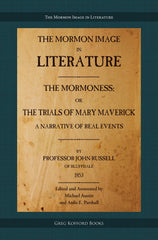 |
The Mormon Image in Literature Series The Mormoness; Or, The Trials Of Mary Maverick: A Narrative Of Real Events Published in 1853, the first American novel about the Mormons is also one of |
 |
The End of the World, Plan B: A Guide for the Future Environmental decline, political gridlock, war and rumors of war, decadence, |
Also forthcoming...
More volumes are in the works for our The Mormon Image in Literature, Contemporary Studies in Scripture, and Perspectives on Mormon Theology series.
Saints, Slaves, and Blacks by Newell G. Bringhurst, revised and updated
Lot Smith: Utah Hero, Arizona Colonizer by Carmen Smith and Talana Hooper
The Trek East: Mormonism Meets Japan, 1901-1968 by Shinji Takagi
Science the Key to Theology by Steven L. Peck
And much, much more...
Thank you for making 2015 exceptional and we are excited about 2016!
Recent Reviews of Kofford Books Titles April 30 2015
Kofford titles continue to receive major accolades in the Mormon academic community. A few highlights from the past couple months:

For Zion: A Mormon Theology of Hope, by Joseph M. Spencer
- “It deserves to be read widely, and the message of consecration deserves discussion in Mormon sacrament meetings, Sunday schools, and General Conferences” —Association for Mormon Letters
- “Those interested in and familiar with Mormon theology will find this a refreshing read...Spencer’s book adds freshness and credibility to the literature, and his contribution to this topic is noteworthy.” —BYU Studies
- "What Spencer’s book drives home (and is all the reason for reading this remarkable book) is the invaluable insight that our hope in the future transformation of the world is made most evident in our loving answerability for its present circumstances." --BYU Professor of Humanities George Handley

- "I think this is now the primary scholarly treatment of the LDS race and priesthood history." — Times and Seasons
- "Stevenson should be commended writing the best resource for Latter-day Saints to learn more about the experience of Mormon blacks in settings both American and international...For the Cause of Righteousness is the best one-volume history of blacks and Mormonism available anywhere." — Juvenile Instructor: A Mormon History Blog
- “For the Cause of Righteousness” is an indispensable and long overdue volume — not only for its content, but also in the way it presents Mormon history. Stevenson’s book crucially shifts away from both the typical top-down leadership narrative, and the “outsider’s” perspective of Mormon racism. Exploring the priesthood ban in the framework of a global community better explains the interaction between blacks and Mormons. Significantly, this work illuminates the average Latter-day Saints’ role in shaping the faith—not as submissive sheep, but as movers and shakers." -- Association for Mormon Letters

- "Toward a Better Understanding" is warmly recommended for anyone who wants to learn more about Joseph’s plural marriages but particularly to those just venturing into its sometimes choppy waters. Were I not vulnerable to the sin of envy, I’d wish I had written it." -- Gregory L. Smith, Interpreter: A Journal of Mormon Scripture
- "I enjoyed this book and found it very helpful...The book allowed me to understand the relationships between events more clearly than I have before. I found the book to be faith-affirming and a further testimony of Joseph Smith’s life as a prophet of God. I would recommend it for those struggling with the topic as well as those who want to know more so they can be prepared for questions from others." --Suzanne Long Foster, Interpreter: A Journal of Mormon Scripture
- "Joseph Smith’s Polygamy: Toward a Better Understanding is an excellent and essential volume that will not only answer questions and offer solace to “truth seekers [who] may encounter details that are uncomfortable when studying early polygamy” but will also be a useful and interesting volume for those who have spent years studying the subject. I wholeheartedly recommend this book to all." --Craig L. Foster, Interpreter: A Journal of Mormon Scripture

Re-Reading Job: Understanding the Ancient World's Greatest Poem, by Michael Austin
Michael Austin received the 2014 Award for Best Religious Nonfiction from the Association for Mormon Letters, for his book, Re-reading Job: Understanding the Ancient World's Greatest Poem. -- Association for Mormon Letters
Q&A with Joseph Smith's Polygamy authors Laura Hales and Brian Hales April 06 2015

Joseph Smith's Polygamy: Toward a Better Understanding
by Brian C. Hales and Laura H. Hales
223 pages
Paperback $19.95 (ISBN 978-1-58958-723-6)
Available April 14th in print and e-book
Q: The last few years we've been inundated with new information concerning Mormon polygamy, from podcasts about polygamy, to the Church posting an essay on the subject, to Brian's 3 volume set on the history and theology of polygamy in early Mormonism. How does Joseph Smith's Polygamy: Toward a Better Understanding fit into that landscape and contribute to this ongoing conversation?
Laura: The Gospel Topics essay on early polygamy gave as good of a basic introduction to the subject as it could in ten pages. Brian’s book was 1500 pages. This book expands on the information in the essay by using the research used to write the trilogy. The first third of the book provides a theological framework for the unfolding of Nauvoo plural marriage; the second third provides the history; and the third contains short biographies of 35 of Joseph’s possible plural wives who agreed to participate in this strange practice.
Brian: Even though this volume is short, no major topic has been avoided. All the controversies have been presented. This volume fills an important niche to help inquirers who want more information than that found in the LDS.org essay, but don’t have the time or interest to dive into 1500+ pages of my trilogy, which deals more with the various opinions regarding the controversies.
Q: Like most authors, you would probably like as many people as possible to read your book. Is there an intended audience for this volume?
Laura: Absolutely. This book differs from the first three volumes in the series in that it was written specifically for Latter-day Saint members curious about Joseph Smith and his many plural wives, or who wonder about the meaning of Doctrine and Covenants 132. Whether the reader has a basic or a more comprehensive knowledge of the topic, they will benefit from the information in this volume.
Q: What do you hope they get from it?
Laura: Our hope is that readers will gain some reassurance. Often in the past, aspects of the practice have been exploited or sensationalized by authors less concerned about accuracy than promoting their opinion of Joseph Smith or for their distaste for the practice of plural marriage.
There may be things that are surprising and possibly discomforting about what occurred during the time period, but when contextualized, they are easier to understand. The early polygamists were just as skeptical as us about the restoration of the practice. Their actions (including the behaviors of Joseph and Emma) are better understood when historical and theological information is provided.
We would also hope that readers will gain just a little bit of sympathy for Joseph Smith as they learn of the difficult choices he had to make. Perhaps readers will also feel admiration for the plural wives whose faith, courage, and tenacity enabled them to have the bravery to embrace this commandment.
Q: Books about controversial subjects invite all kinds of commentary and criticism. As you have thought about what you would like reviewers to write about the book, what would top your wish list?
Laura: We did our best to present the story in the words of the participants without overly opining on motivations for behaviors, leaving the reader to ponder the evidence. At times, we probably could have provided more context, but we really wanted the reader to be able to look at the scant evidence and realize that much that has been previously published has included a fair amount of guess work. There is so much that we simply do not know. Hopefully we have conveyed the nebulous nature of the historical record, so the reader will be wary of any author that proclaims to know for surety what happened in any given situation.
If readers and reviewers could leave the book with an open mind, pondering what they have read, and searching on their own to answer their questions through further research, then I would be pleased. I have done this myself, studying the history of these people, how they interacted socially, and why Joseph would choose to be sealed to certain women. Some of my questions have been answered, but it takes time, patience, and study on the part of the seeker. Having reviewers laud us for leaving the door open instead of evaluating the merits of the book on their preconceived notions of what occurred, would be great.
Brian: Because polygamy involves sex and religion, it is immensely controversial. It appears that the greatest factor in determining a person’s reaction to plural marriage (or a book about it) involves their a priori beliefs. Because of the ambiguities and contradictions in the historical record, multiple interpretations can be advanced. Unbelievers seem to disagree with any explanation that does not depict Joseph as an adulterer motivated by libido. Believers, on the other hand, may join with us in seeing that while questions exist, there is no credible evidence Joseph was involved in sexual immorality and much documentation to support he was sincere and felt compelled by God to establish the practice.
This book is not an attempt to increase testimony, but instead to tell the story as accurately as we can, believing that historical truth will support belief better than any alternative. Accordingly, the best we may be able to hope for is for reviewers to conclude that we have presented the evidences with clarity and in a balanced way allowing individuals to understand our interpretations, even if they do not agree with them.
Q: Laura, tell us a little about your own journey in co-authoring this volume with Brian. Where were you at personally about the subject matter when you began the project, and where did you end up?
Laura: My journey began before I married Brian. I attended an author-meets-critic session at the Sunstone Symposium where Brian’s trilogy was being critiqued. I hadn’t read the book, so I had no idea if the criticisms were valid. So I read the books over the next six weeks, expecting not to learn much new about early polygamy. After I finished the last page of the book, I found myself asking what had happened to the Joseph Smith I knew.
After thinking, writing, and studying about Joseph Smith and his practice of polygamy for the last eighteen months, I think I have found him again. He isn’t the sanitized prophet that I grew up with, but he is much more real to me. Over time I have been able to feel sympathy for him, which was elusive for me for a long time. The Joseph I know now is so much more multi-dimensional, and I feel like I have been able to get a small glimpse into his character from those who knew him. Hopefully over the years that view will broaden with even more study because I still have unanswered questions.
Q: What were the most enjoyable and least enjoyable aspects of writing Joseph Smith's Polygamy?
Laura: The most enjoyable part of writing a book with a co-author is the synergy that happens—working together on an idea, completing each other’s sentences, and suggesting that elusive word to express a common thought. The least enjoyable aspect of writing this book were the spirited conversations that occurred when we disagreed on how to present a specific concept. I had to keep reminding Brian that he had already written “that book” and this one was for a different purpose and audience. I’m sure this was frustrating for him as well because this it is the first time he has collaborated on a writing project.
























